Interlocking panels have been supplied by Metal Cladding Systems on almost every type of project.
From large scale commercial developments, through to small residential renovations, this profile has something to offer every project, big or small. The profile’s design provides extensive material variety, panel configuration flexibility, and lay direction options. Interlocking is the chameleon of Metal Cladding Systems’ product range.
Let’s take a closer look at this adaptable facade profile and explore its key features, benefits and design value.
What does an Interlocking panel look like?
Interlocking is an express system and is commonly referred to as an ‘express panel’. Unlike Standing Seam, Nailstrip, Snaplock and Shingles, Interlocking has a recessed space between each panel. This space is created during installation, when the male end of one panel is fit into the female of another. The express between each pan can be made to any dimension between 0 mm and 25 mm. Interlocking is flat and sits 25 mm off the substrate.
Designed with concealed fixing in mind, this profile consistently offers a sleek and linear aesthetic.
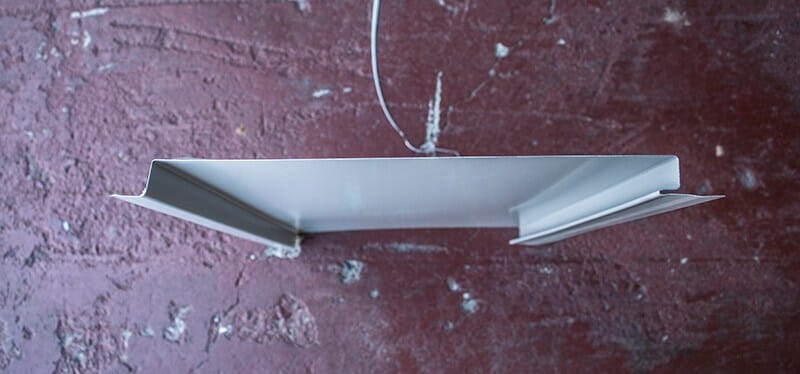
How are Interlocking panels made?
Interlocking panels sit within Metal Cladding Systems’ rolled collection. Cut material is fed into dedicated European made roll forming machinery. Each machine is fitted with profile cassettes, designed to shape flat sheet metal surfaces into profiled sections. The process is relativity fast and each machine requires two operators to ensure panels are fed and received correctly.
Roll formed profiles, such as 25 mm Standing Seam, 25 mm and 38 mm Nailstrip and Snaplock and Interlocking, tend to be more cost effective (this is material dependent), when compared to hand folded systems, such as Cassette, Shingle and Flatlock.
Metal Cladding Systems’ purpose designed machinery allows for quick, efficient and consistent panel fabrication.
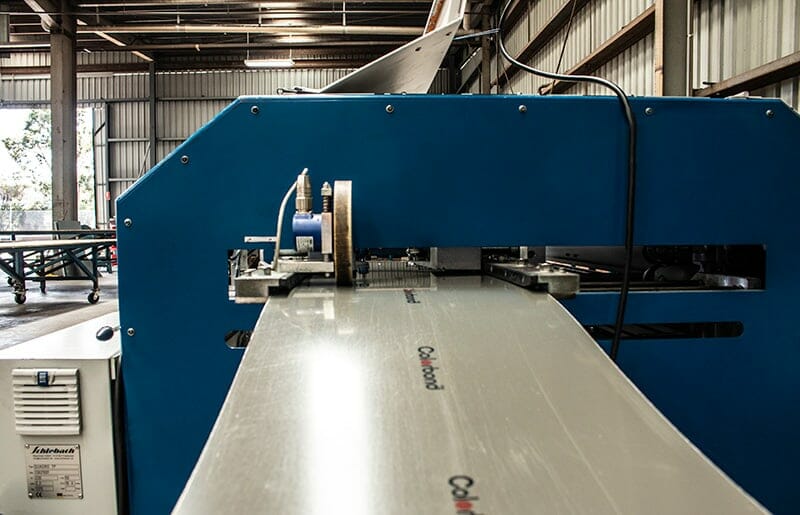
What materials can Interlocking be made from?
If variety is the spice of life, Interlocking wall cladding is a jalapeno! With minimal tight radius folds, or intricate fabrication methodology, this profile is available in all materials offered by Metal Cladding Systems.
Metal Cladding Systems operate on project based production cycles; meaning everything is made to order as needed. This fabrication method not only reduces waste, it also allows architects, builders and homeowners the ability to select materials that best suit their design. Metal Cladding Systems’ Interlocking panel is currently available in:
- COLORBOND® Steel Standard
- COLORBOND® Steel Matt
- COLORBOND® Metallic
- COLORBOND® Steel Ultra
- Vestis Aluminium
- Weathering Steel/Corten
- VMZINC
- Rheinzink
- Elzinc
- Zintek titanium zinc
- Natural copper
- Natural brass
- Aurubis copper and brass
- Galvanised steel
- Zincalume
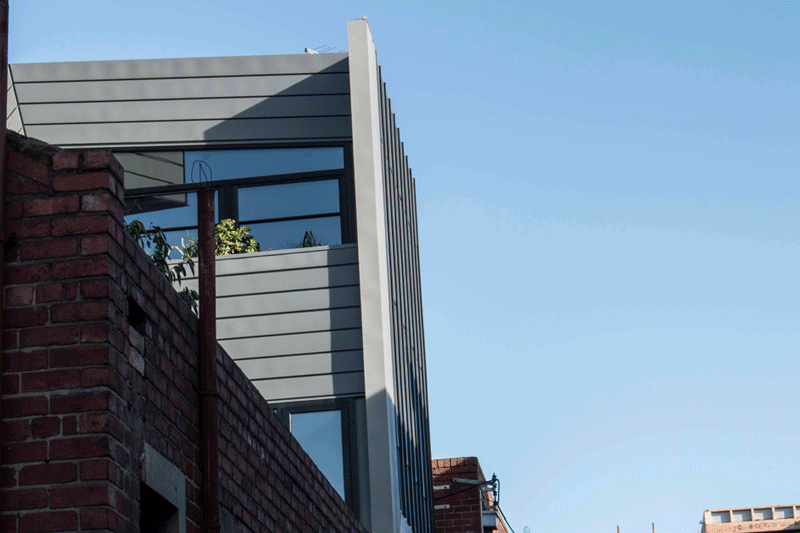
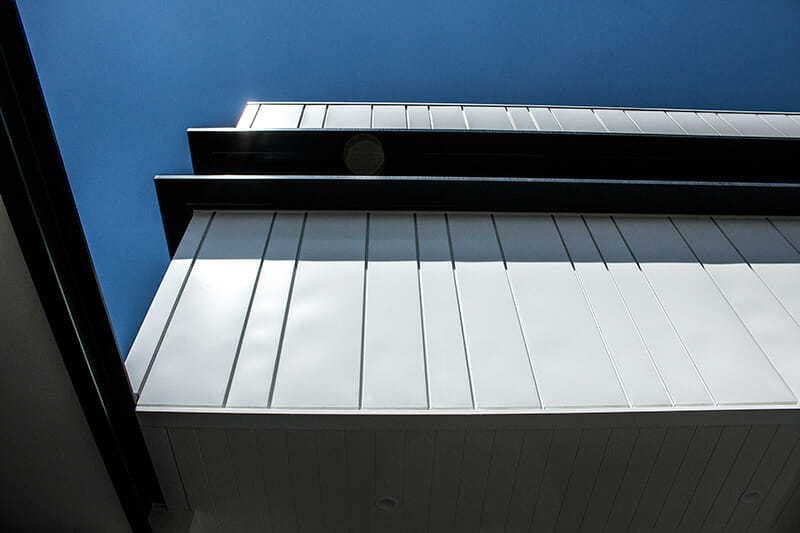
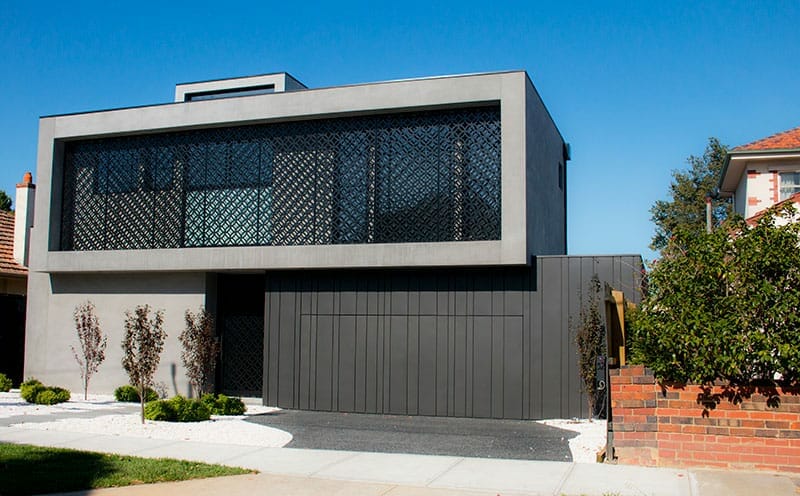
What design freedoms does Interlocking metal cladding offer?
Project based manufacturing allows Metal Cladding Systems to offer total panel fabrication flexibility. With adjustable pan widths, lengths and express join, Interlocking panels provide the ultimate level of customisation. This panel can be transformed by adjusting and playing with pan width and express spacing. Some examples of popular panel configurations are:
- 180 mm pan, 25 mm express
- 280 mm pan, 25 mm express
- 190 mm pan, 15 mm express
- 290 mm pan, 15 mm express
- 195 mm pan, 10 mm express
- 295 mm pan, 10 mm express
- 480 mm pan, 25 mm express (best used with thicker materials, for example: 1 mm titanium zinc)
Interlocking can achieve a similar aesthetic to timber weatherboards or compressed fibre cement sheeting by manipulating pan and express dimensions. Unlike more traditional facade materials, sheet metal panel systems require minimal long term maintenance.
Lay direction can also be selected to create dynamic facade patterns and visual texture. Interlocking panels can be installed vertically, horizontally or diagonally.
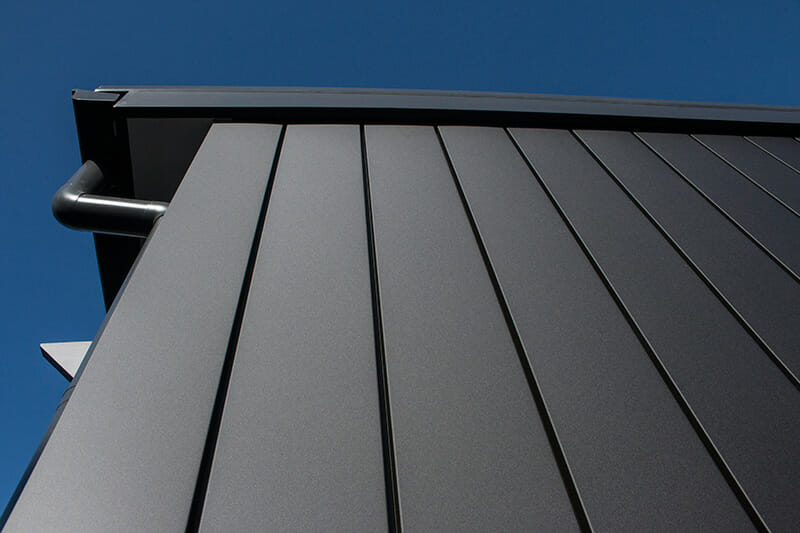
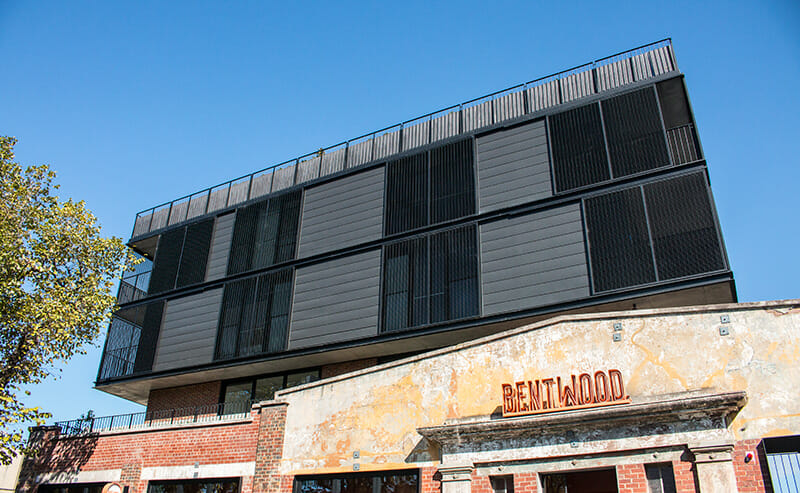
How are Interlocking panels installed?
This is one of few metal cladding profiles that can be successfully installed onto continuous and non-continuous substrates; such as construction grade plywood or steel top hats. Panels are installed using direct screw fixings, through the panel and into the substrate (fixings should be made at 450 mm centres). Each panel conceals the fixing of the panel before, ensuring an architectural aesthetic is maintained.
All Metal Cladding Systems panels require custom flashing to be ordered and installed for cladding profiles to be compliant and watertight facade systems. Because of the bespoke nature of architectural sheet metal cladding, no job is the same. Waterproofing details must be decided by the installer. Most installers are qualified roof plumbers with dedicated knowledge around waterproofing and custom flashings.
Metal Cladding Systems recommend profiles always be installed by experienced, knowledgeable, and professional cladding installer. It’s also recommended that all installations use a breathable and waterproof membrane.
To get in touch with an installer, discuss your project further, or to request more information on Interlocking panels and other cladding solutions, contact our project team at info@metalcsystems.com.au, or on 03 9587 4554.
Contact us

